Tonneau
If you want to know more about the appeal and history of the Cartier Tonneau in the video, click here ↓
In this article, we will explain about "Tonneau".
Since it is not available in the current line, I think it is a model that only Cartier fans will understand, but I think the reason Cartier is a jewelry brand is that it creates designs that other companies cannot imitate.
By reading today's article, you will learn about the history and appeal of the Tonneau, what sizes and materials it is available in, and where it currently stands.
I think you will understand what I mean, so please read to the end.
The History of the Cartier Tonneau Watch
The first prototype of the tonneau was designed early on, in 1906.
It is said to be the first Cartier watch and the first wristwatch. The "Cartier Santos" was created in 1904, so the Tonneau is actually the second oldest model.
Let's take a look at the origin of this Tonneau model.
Tonneau means "barrel" in French, and as its name suggests, it has a bulge in the center and a tucked belt part.
Looking at the case, it is smoothly curved and designed to fit comfortably on the wrist, making it a model that exudes the elegance favored by aristocrats.
Also, from the time it was created, it was positioned as a men's model, and later on in the 1980s and 1990s it was evolved into a women's model.
Although the Tonneau has been sold several times throughout its history, it was only sold for a set period of time and never appeared as part of the official lineup.
In this way, the Tonneau is more of a model for enthusiasts, which is probably why it is not very well known.
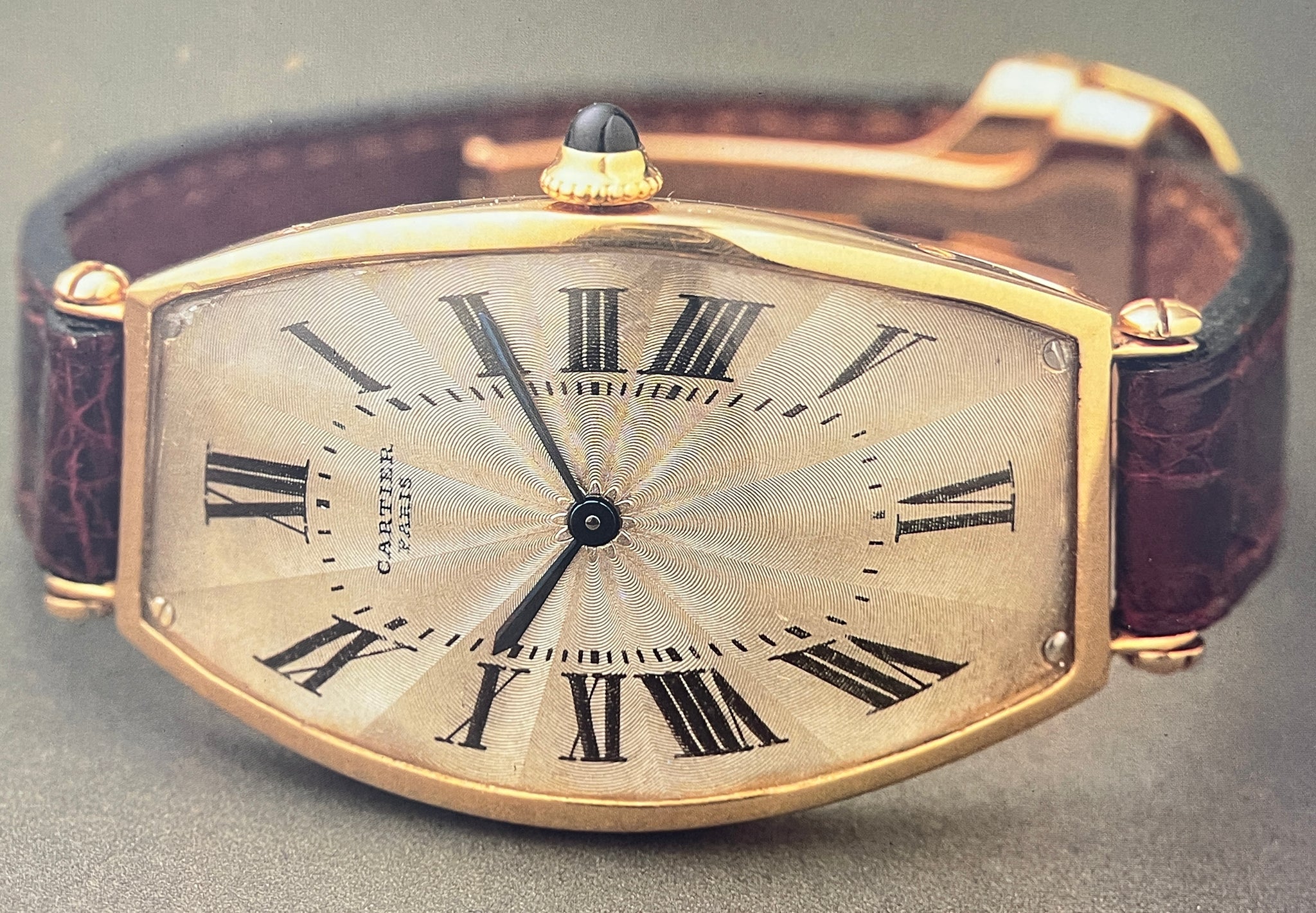
This watch is not the first Tonneau, but it is one of the Tonneaus made relatively early on.
The dial centre is decorated with guilloché engravings emanating from a rose pattern and is secured in place with screws.
On a typical watch, the word SWISS or, for Cartier, PARIS would be printed under the 6 o'clock position, but since this is an early model, there is no printing in that area yet.
Also, please pay attention to the lug part, which is a type that fastens the belt with screws.
The original role of the lugs is to connect the strap to the watch case, but Cartier has incorporated the lugs as part of the jewelry.
In other words, the design includes even the lug part.
Incidentally, the design, including the lug, was later inherited by the "Diavolo."
Watches from that time were made with a lot of effort aimed at the wealthy, so they feel more like jewelry than watches.
It's a beautiful watch, hard to believe it's from the early 1900s.
Check out Tonneau's past collections
However, it was quite some time before this tonneau appeared on the market again, in the 1980s.
At this time, it was sold as a luxury model that was produced temporarily, and models made of 18k yellow gold and platinum, with diamonds set in the ladies' models, were available.
However, at that time she was not well received by men and was more seen as a ladies' model.
This was because the global watch fashion of the time was a harbinger of an era in which larger and larger watches were increasingly in demand, and the problem arose that the tapered lug design of the tonneau watch and the thin strap extending from it were perceived as being too elegant and feminine by men.
Due to these circumstances, not many tonneaus were produced in the 1980s and 1990s, and the fact that they were reproduced during this period is not widely known.
Reviving "Tonneau" in CPCP
The next time it saw the light of day was in 2006.
The Tonneau was born in 1906, and a reprint was made in 2006 to commemorate its 100th anniversary.
In the 2000s, even larger clocks became popular.
Around this time, Panerai's Luminor and Radiomir became extremely popular, and larger watches such as Audemars Piguet's Royal Oak and Patek Philippe's Nautilus began to be in demand on the market.
Therefore, Cartier, having had a bad experience with the previous model, decided to increase the size of their watches and this time brought the XL-sized Tonneau watch to the market.
The size has increased considerably from the previous 39mm. At 43.4 mm (52 mm including the lugs) x 29.4 mm, the problem of thin lugs and thin straps has been solved.
To put it simply, CPCP stands for " Collection Privee Cartier Paris ," where Privee means "private" in English, and refers to a collection of revivals of Cartier's most historic models.
Not only the Tonneau, but other models have also been reproduced, and these watches are characterized by being produced in limited quantities, with each one carefully crafted by a craftsman.
For more information on CPCP, please watch this video:
The collection is available in platinum, 18k white gold, yellow gold and pink gold, and includes not only the standard time display model but also a newly designed dual time zone model.

The rose-patterned dial is decorated with silver guilloche engraving and the word "Paris" engraved on it, making it a faithful reproduction of the original Tonneau watch. Although it is part of the latest collection, it also has an elaborate vintage feel .
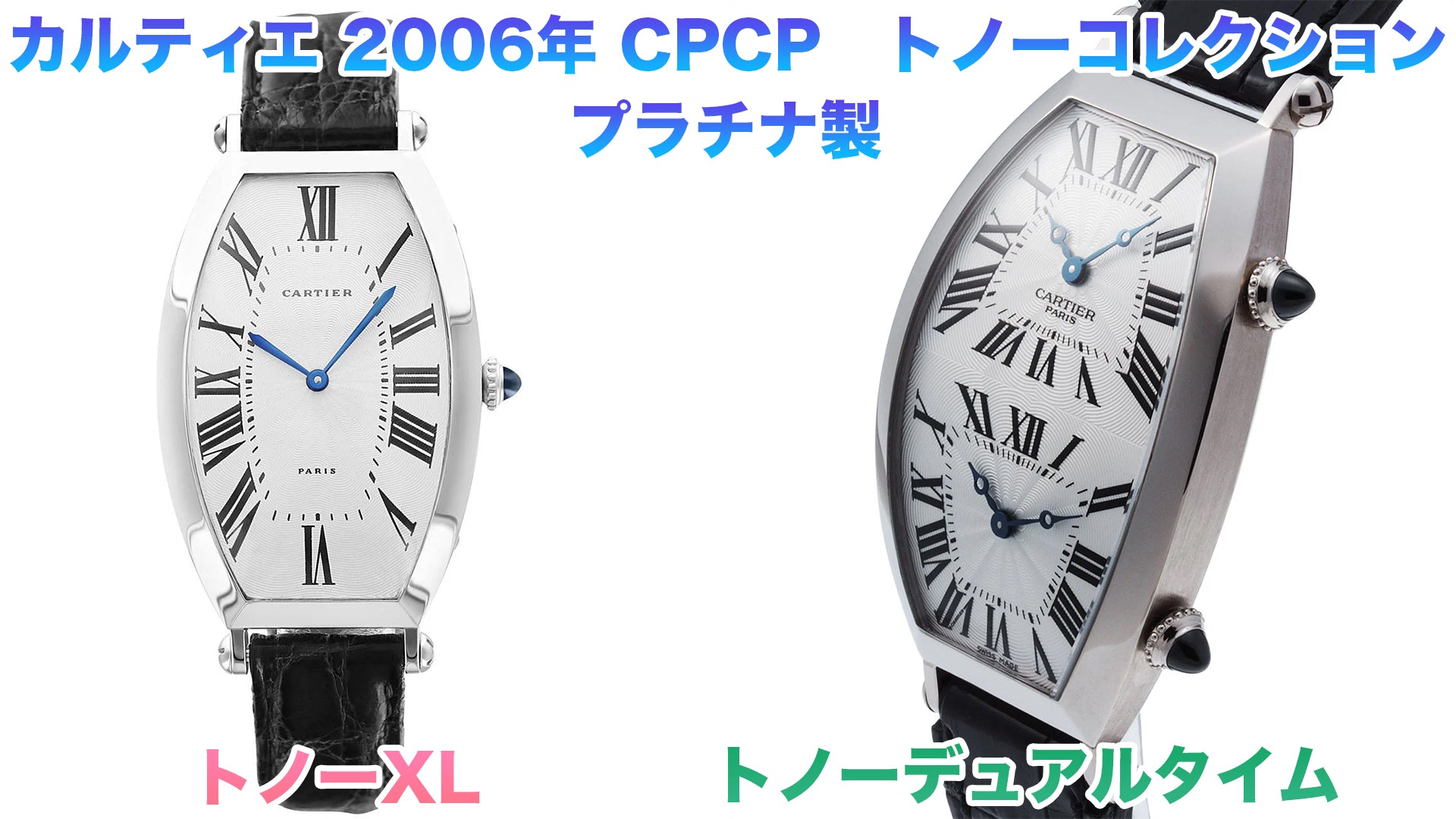
The hands are also carefully designed, with two patterns available: sword hands and Breguet hands, which are rarely seen these days.
Also, it is worth noting that Cartier did not have much technical capability in movements at the time, but Jaeger-LeCoultre and Piaget, which are also part of the Richemont Group, were responsible for designing and manufacturing the movements and providing them to Cartier.
By the way, there are other companies such as Frederic Piguet and We also collaborate on development with Girard-Perregaux, Svend Andersen, and others.
The movement of this Tonneau is the Cal. 9790 MC, which is based on Jaeger-LeCoultre's hand-wound movement.
There are two crowns, but these are equipped with independent movements and each time zone operates independently.
2018: The Tonneau returns to Collection Privé
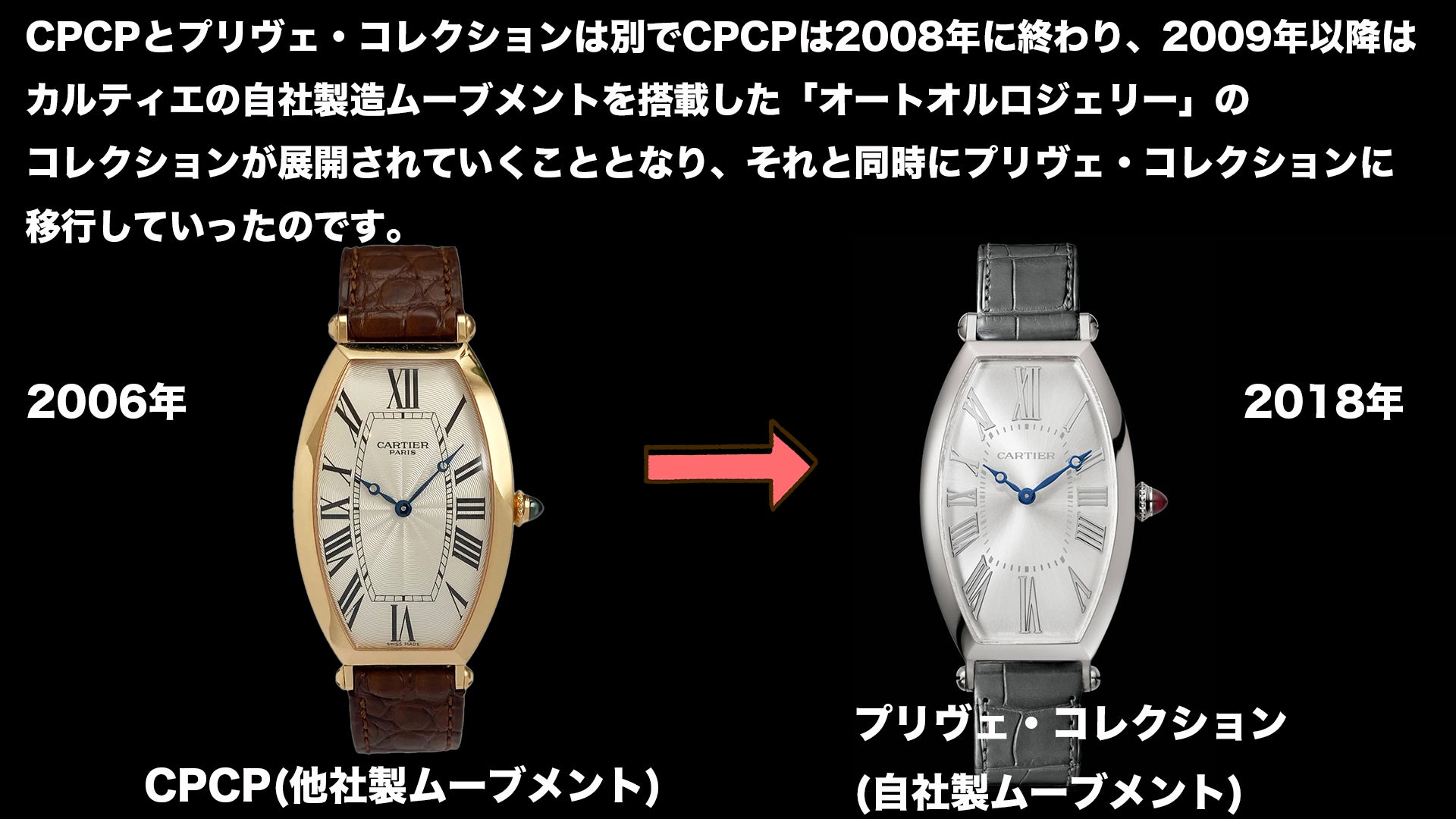
In 2018, 12 years after the CPCP collection, Tonneau was awarded the SIHH It was revived again at the Salon International Haute Horlogerie, attracting many visitors.
The collection was launched as "Privé Tonneau" and marked the beginning of historically inspired design.
As explained in the CPCP video I posted earlier, CPCP and the Privé Collection are separate, and CPCP ended in 2008. Since 2009, Cartier has launched its "Haute Horlogerie" collection, featuring movements manufactured in-house, and at the same time has transitioned to the Privé collection.
In short, the Privé collection is a collection equipped with in-house manufactured movements, something that was not possible during the CPCP era.
Like the previous collection, the new collection comes in both regular and dual-type models, and is made from 18K rose gold and platinum.
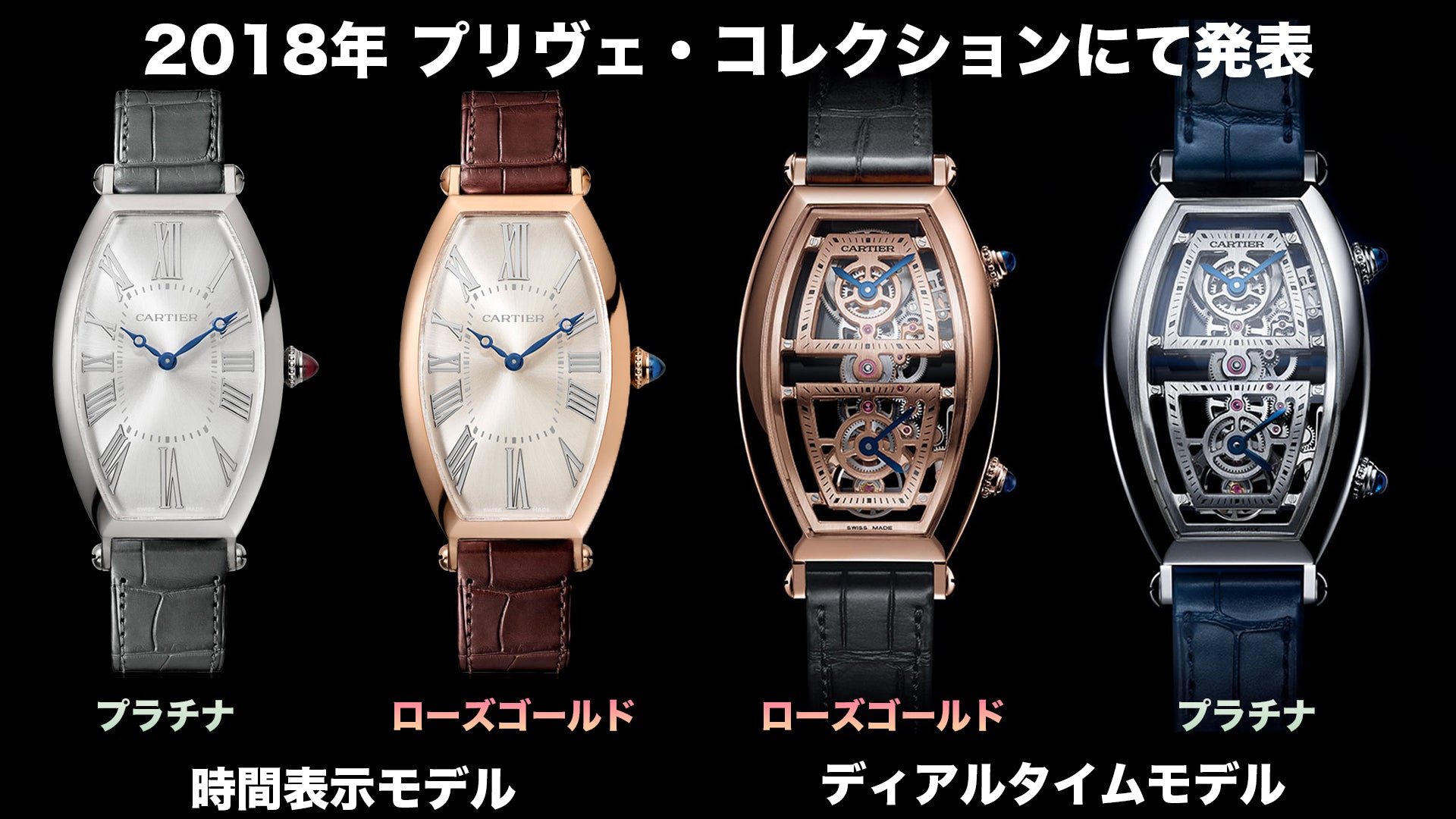
The new model retains the curvaceous beauty of the original Tonneau but updates its proportions and design to meet modern standards.
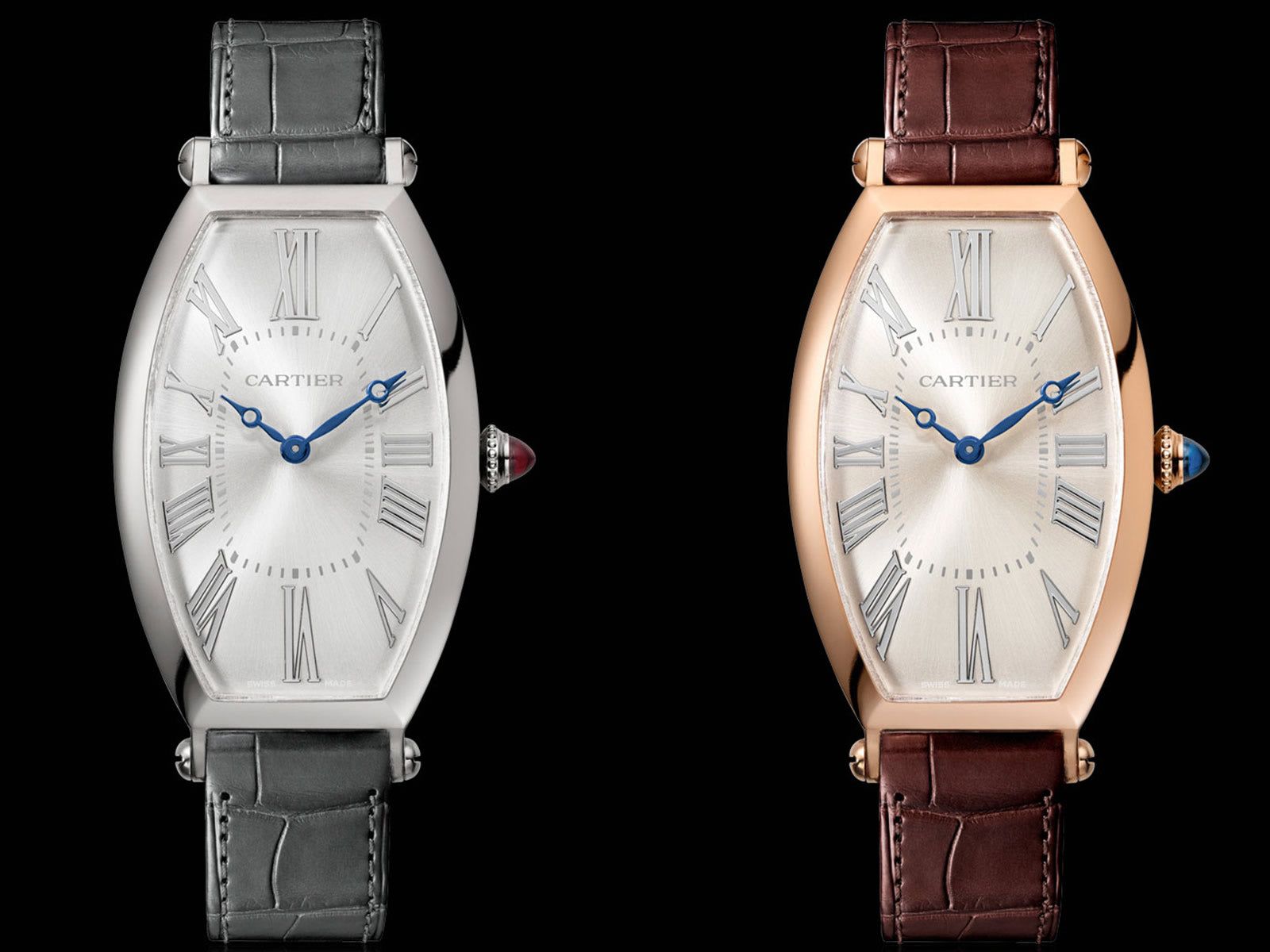
The case size is 46 x 23mm for the time-only model and 46 x 23mm for the dual-time model. This watch is also designed in a large size, measuring 43.4 mm (52 mm including the lugs) x 29 mm.
The tonneau design has changed significantly since this model, so let's take a look at each design.
The dial has been replaced with a silver radial dial found on previous models, and the new style features a sunburst-style dial in either a grey or champagne color.
The decoration is smooth and features delicate, extremely fine lines radiating outwards with a satin finish.
The movement is the in-house Cal. 1917 MC, which is hand-wound and has a power reserve of 38 hours.
The 100-piece limited edition model made of platinum (ref. WGTN0005) differs from other common models in that it features a ruby set on the crown.
Now let's take a look at the Skeleton Dual Time model.
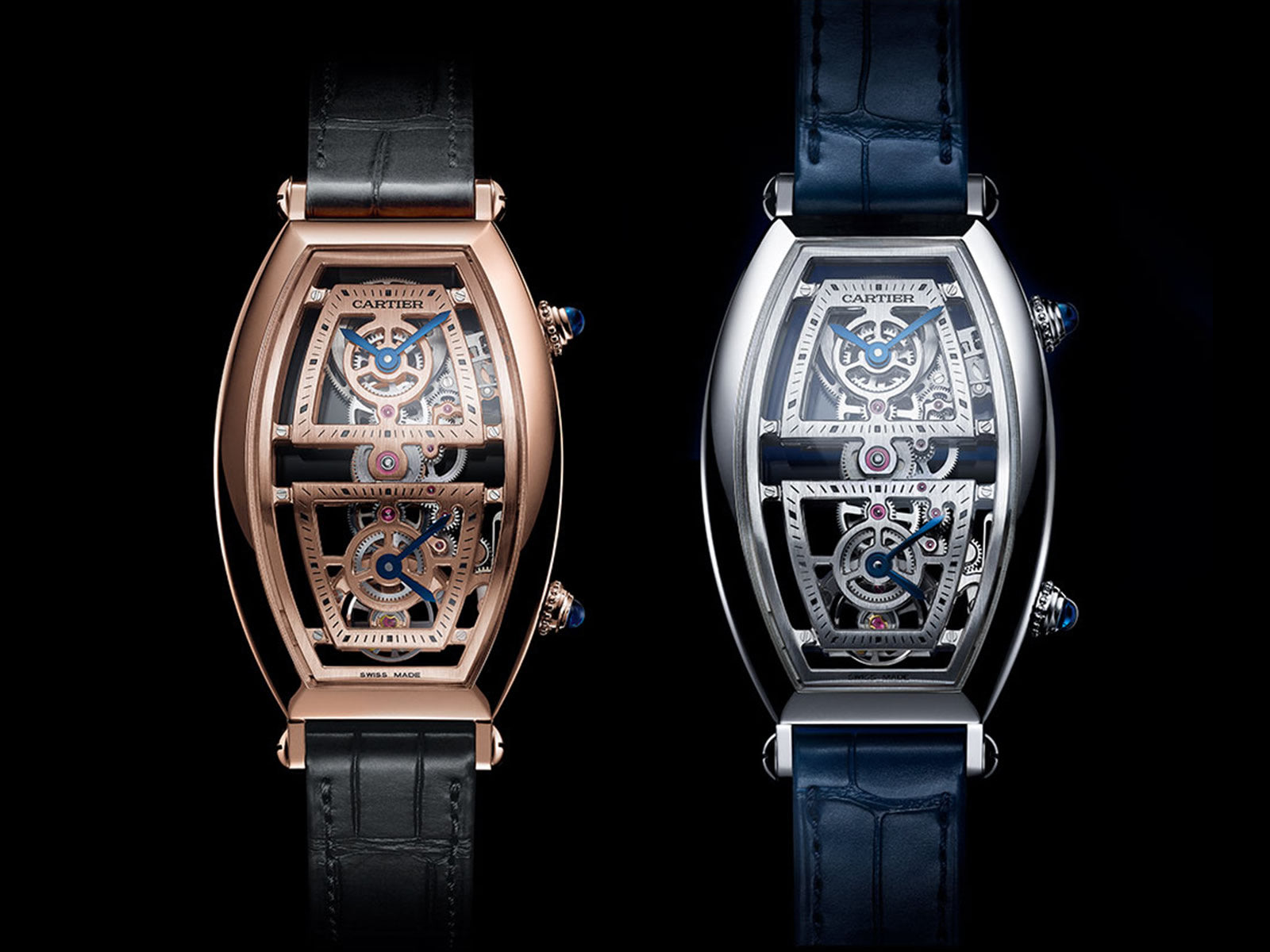
The movement used is the in-house manufactured Cal. 9919MC, a single movement with one barrel, gear train, and regulator, and features two independent time displays.
The power reserve is 60 hours.
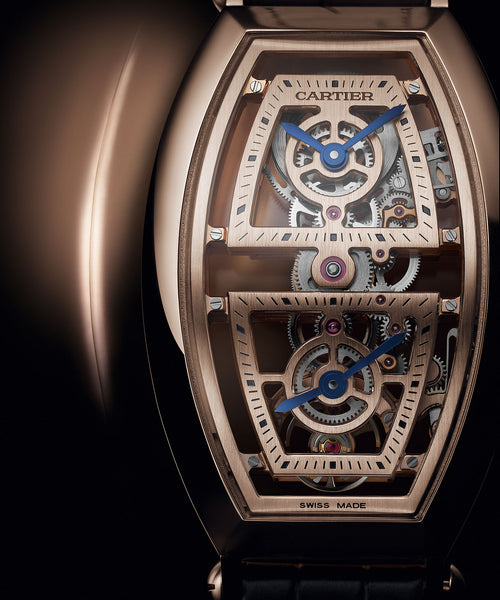
What's amazing about this movement is that it is curved, meaning that the barrel ratchet and the gear train mesh at a slight angle to operate.

The crown at 2 o'clock is for winding and setting the time, while the crown at 4 o'clock is a pusher that advances the second time zone on the lower dial in one-hour increments.
When it comes to Cartier, the image of a brand with beautiful exteriors comes to mind, but as you can see, their movements are also of a quality that is comparable to those of other companies.
summary
Finally, to summarize, as we have explained so far, the Tonneau model is classified as a special model among Cartier models.
Comfortable yet elegant, with a stunning combination of curves and straight lines, the Tonneau can be said to be one of Cartier's most representative models.
The price is by no means cheap, and is extremely expensive, but after reading this article, I think you will understand why it is so expensive.
It is not an easy experience to wear a wonderful watch that was carefully crafted by craftsmen in this era, and you cannot understand its appeal unless you understand how much it is worth.
If you've ever thought that tonneaus were cool, now might be the perfect opportunity to get one.